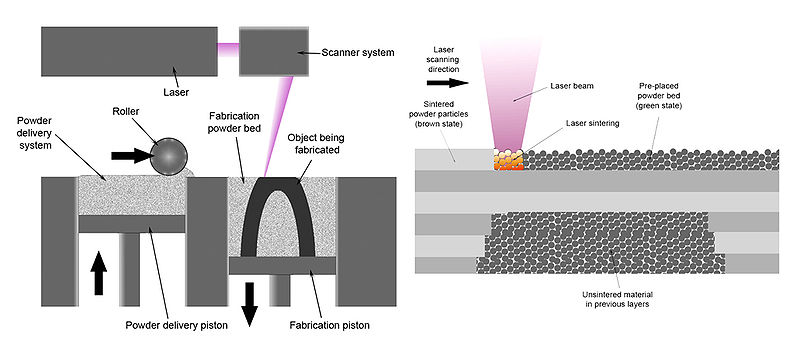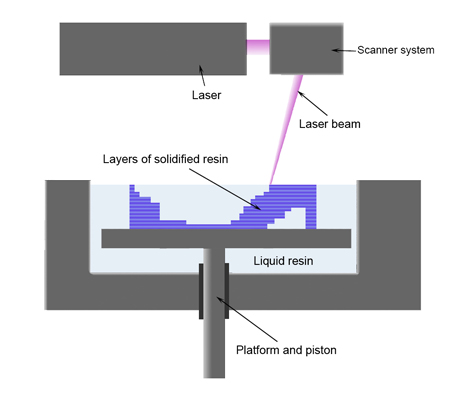“Three-dimensional printing …may have as profound an impact on the world as the coming of the factory did….Just as nobody could have predicted the impact of the steam engine in 1750—or the printing press in 1450, or the transistor in 1950—it is impossible to foresee the long-term impact of 3D printing. But the technology is coming, and it is likely to disrupt every field it touches.” The Economist, Feb 2011 (1)
The rapidly evolving fields of digital fabrication, personal manufacturing and 3D printing are revolutionising manufacturing and design – taking them from the factory floor and into work places, schools, and homes. Desktop 3D printers, open source 3D design programs and print-on-demand companies are offering creative people unprecedented new opportunities to not only prototype their creations but also to manufacture and sell their work on a scale to suit demand.
3D printing (or additive manufacturing) creates real, solid objects one layer at a time using digital designs. It is widely predicted that 3D printing techniques may soon do for manufacturing what the internet has already done to information-based goods and services. According to an October 2011 report by the Atlantic Council “Could 3D Printing Change the World”, these technologies could “up-end the last two centuries of approaches to design and manufacturing with profound geopolitical, economic, social, demographic, environmental, and security implications”[2].
Additive manufacturing builds products layer by layer (“additively”) rather than cutting out material from a larger block (“subtractive manufacturing”). This small distinction is crucial – its potential implications include:
- Products can be manufactured locally, with only the digital designs needing to be distributed around the world – so reducing the reliance on major manufacturing economies such as China, and eliminating the carbon footprint of manufactured goods
- Products can be printed on-demand, without the need for inventory to be held in stock, allowing small business premises to become small-scale factories without the need for warehouse space
- Whole products can be printed out in one process, removing the need for assembly lines and allowing the product to be manufactured at the point of demand
- Products can be customised to meet the precise individual needs of the end consumer
Furthermore, the effect of these technologies on the speed of innovation is incredible – a new product can now be conceived of, designed, prototyped, manufactured and sold within a matter of days.
3D Printing Processes

FDM Process (image courtesy Wikipedia)
Fused Deposition Modeling (FDM): Works like a robotic hot glue gun – plastic goes into the printer as filament and is heated to a controlled temperature. The melted plastic is then pushed through the nozzle in a thin stream. Fine layers are built up when the platform descends. This is the process used by most desktop 3D printers, including ANAT’s MakerBot.

SLS process (from Wikipedia)
Selective Laser Sintering (SLS): uses a laser to fuse particles into a 3D mass. The particles of powder are heated by the laser to melting point and fuse together. This technique can be used to create objects from a wide range of materials, including ceramics, plastics, glass and metals.

SLA process (from Wikipedia)
Stereolithography (SLA): utilises a vat of UV curable resin and a UV laser – the laser traces a pattern on the resin, solidifying it and the tray descends by the layers’ thickness.
ZPrinting: an inkjet-like printing head moves across a bed of powder, selectively depositing a liquid binding material in the shape of the section. A fresh layer of powder is spread across the top of the model, and the process is repeated. Unique among rapid prototyping technologies, Zprinters can print parts in full color, by varying the color of the binding liquid applied by the printing head at any location.
